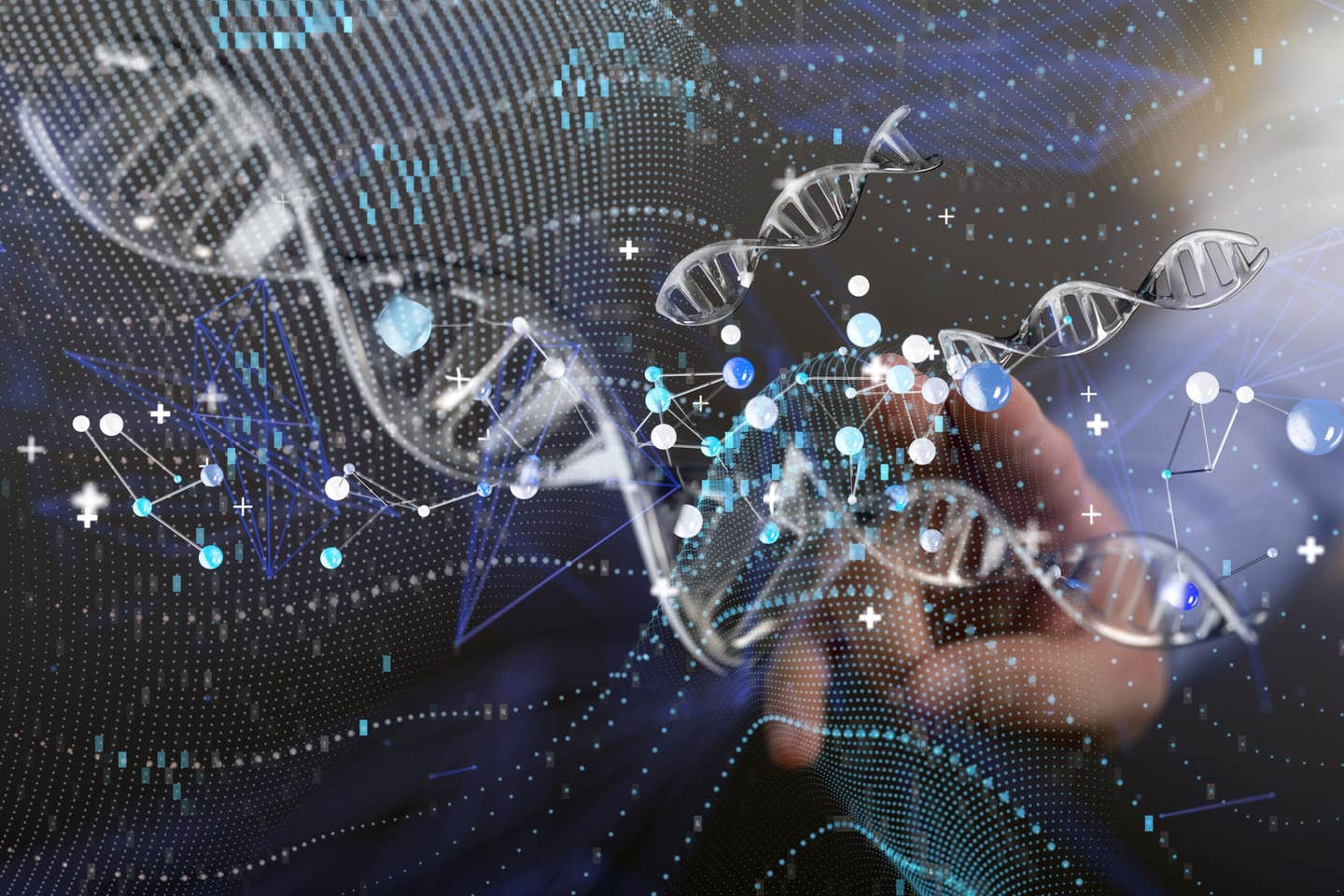Pythons can teach us a lot about human digestion
Discover how python intestinal regeneration offers insights into conserved mechanisms that could inform treatments for human digestive diseases.

Python intestinal regeneration sheds light on conserved pathways shared with humans, offering new avenues for treating digestive disorders. (CREDIT: Todd Castoe, UT Arlington)
In the animal kingdom, the vertebrate intestine is renowned for its regenerative capacity, a vital process for maintaining digestive health.
Mammals like humans rely on stem cells in intestinal crypts to ensure constant cellular turnover. These crypts are microscopic structures that continuously replace intestinal cells, maintaining functionality despite daily wear and tear.
However, snakes such as pythons and boas offer a dramatic contrast to this system. These reptiles possess no intestinal crypts yet undergo some of the most extreme examples of intestinal regeneration observed in nature.
When pythons fast for extended periods, their intestines shrink and become almost non-functional. Upon feeding, these structures undergo rapid and extraordinary growth. Within 48 hours, a python’s small intestine more than doubles in mass, and its microvilli length increases fivefold.
These changes restore digestive capabilities to handle large meals. This extreme physiological response is accompanied by substantial shifts in metabolism, with oxygen consumption rates surging by up to 44-fold. Remarkably, within two weeks, the intestine returns to a state resembling the fasted condition, underscoring the reversible nature of this regenerative process.
To uncover the mechanisms behind such dramatic regeneration, researchers employed advanced genetic tools, including single-nucleus RNA sequencing (snRNAseq) and tissue-level RNA sequencing (mRNAseq).
Published in the journal, Proceedings of the National Academy of Sciences, these techniques allowed scientists to examine gene expression patterns in Burmese python intestines during fasting and various stages of regeneration after feeding.
The results revealed thousands of differentially expressed genes within just one day post-feeding, shedding light on the intricate signaling pathways that govern this process.
The study identified conserved regenerative signaling pathways shared across vertebrates. Key regulators, such as NFE2L2, ATF4, and TGFB1, were activated early in the regeneration process.
These pathways are not unique to snakes; similar mechanisms are observed in humans following significant intestinal remodeling, such as after Roux-en-Y gastric bypass (RYGB) surgery. This surgical procedure, often used for weight loss and diabetes management, triggers substantial intestinal regeneration and metabolic changes, drawing parallels to the processes observed in pythons.
Related Stories
The findings also highlighted the activation of pathways like mTOR signaling, which is crucial for cellular growth, and stress response pathways such as the unfolded protein response. These mechanisms help coordinate the rapid structural and functional restoration of the python’s intestine.
The study demonstrated that stress responses, which are typically associated with injury repair, play a pivotal role in orchestrating regenerative growth in pythons.
“Interestingly, we found the signaling pathways that regulate python regeneration share key similarities to those observed in humans after Roux-en-Y gastric bypass,” said Siddharth Gopalan, a Ph.D. student involved in the study.
These findings underscore the evolutionary conservation of intestinal regenerative mechanisms across species, providing a unique opportunity to study these processes in a non-mammalian model.
One surprising finding was the role of specific cell types, particularly BEST4+ cells. These cells are crucial for coordinating early phases of intestinal regeneration by promoting lipid transport and metabolism.
Unlike mammals such as mice, which lack these cells, BEST4+ cells are present in both pythons and humans, making them a key focus for understanding conserved regeneration mechanisms.
“These findings highlight the importance and largely neglected roles BEST4+ cells likely play in human intestinal function,” said Dr. Todd Castoe, a biology professor and senior author of the study. The discovery of these cells’ central role emphasizes their potential as therapeutic targets for enhancing intestinal regeneration in humans.
The study also revealed extensive heterogeneity among intestinal cell populations. While non-epithelial cells like endothelial and hematopoietic cells showed consistent patterns across timepoints, absorptive cells exhibited dynamic changes.
These shifts in gene expression suggest that different cell types contribute uniquely to the regenerative process. For instance, goblet cells, responsible for mucus production, expanded in frequency during early regeneration phases, indicating their importance in rebuilding intestinal defenses and function.
Moreover, the python’s intestine demonstrated the ability to integrate complex intercellular signaling pathways to achieve regeneration. Researchers observed that specific mesenchymal cells, derived from connective tissue, played a critical role in coordinating the growth and repair of the intestinal epithelium.
This interplay between cell types ensures the regeneration process occurs efficiently and without excessive inflammation or scarring, hallmarks of pathological conditions in humans.
The python’s ability to regenerate its intestine without crypts offers valuable insights into alternative regenerative pathways. By comparing these processes to those in mammals, researchers aim to expand our understanding of how vertebrate intestines regenerate.
Canonical models of intestinal regeneration emphasize the importance of crypts for producing enterocytes that migrate to villus ends. Yet, pythons achieve similar regenerative outcomes through non-canonical mechanisms.
“Learning more about digestion in other animals gives us a broader understanding of the evolutionary design of these important functions of the body,” said Castoe. Studying snakes not only enhances our knowledge of vertebrate biology but also provides clues for developing new treatments for gastrointestinal diseases.
For instance, conditions like celiac disease and chemotherapy-induced intestinal damage involve impaired regenerative capacity. Understanding conserved pathways could inform therapeutic strategies to restore intestinal function.
The findings also connect intestinal regeneration to broader metabolic adjustments. Pythons rapidly shift out of a dormant state by activating pathways linked to embryonic development and wound healing.
These processes involve intricate intercellular communication, coordinating growth and stress responses to rebuild the intestine efficiently. Such mechanisms mirror those seen in human intestinal remodeling, reinforcing the relevance of this research to human health.
Additionally, the study highlighted how regenerative processes in pythons are tightly regulated to prevent pathological changes. In humans, intestinal dysregulation can lead to severe diseases, such as inflammatory bowel disease or cancer. By understanding how pythons naturally achieve controlled regeneration, researchers may identify ways to modulate these processes in humans, reducing the risk of adverse outcomes.
This study positions pythons as an emerging model for studying intestinal regeneration. Unlike commonly used mammalian models, snakes offer a distinct perspective on how extreme regeneration occurs without conventional structures like crypts. By leveraging advanced sequencing technologies, scientists can unravel the molecular underpinnings of these processes, paving the way for novel medical interventions.
The parallels between python regeneration and human intestinal remodeling highlight the potential for cross-species insights. Understanding how conserved mechanisms operate in different contexts could lead to breakthroughs in treating metabolic disorders, digestive diseases, and even conditions related to aging.
As researchers continue to explore these connections, the python’s extraordinary regenerative abilities may unlock new possibilities for improving human health.
By uncovering the fundamental mechanisms of intestinal regeneration, this research paves the way for innovative treatments. From addressing intestinal damage caused by medical therapies to improving metabolic health through targeted interventions, the potential applications are vast.
The study also emphasizes the importance of studying diverse species to uncover universal biological principles, illustrating how nature’s solutions to complex problems can inspire advancements in medicine.
Note: Materials provided above by The Brighter Side of News. Content may be edited for style and length.
Like these kind of feel good stories? Get The Brighter Side of News' newsletter.



